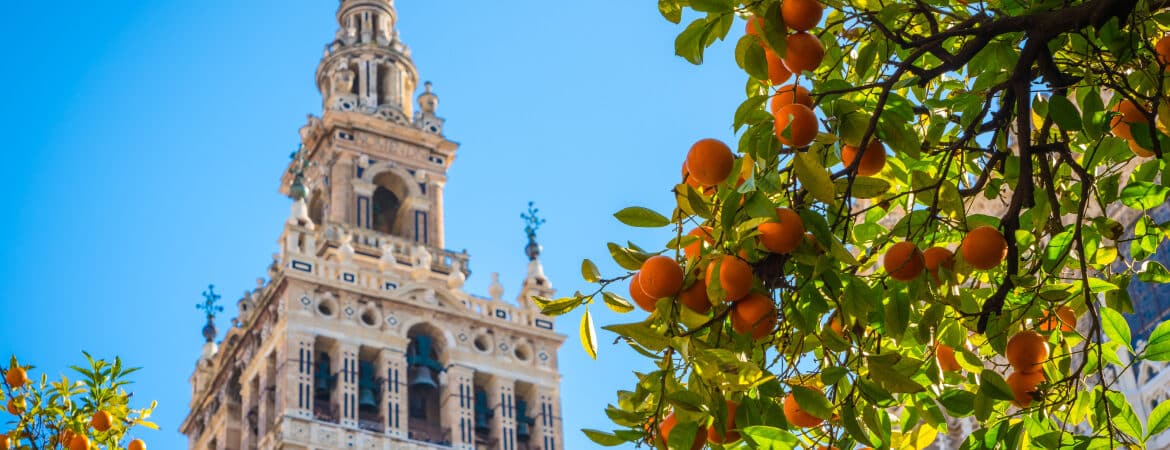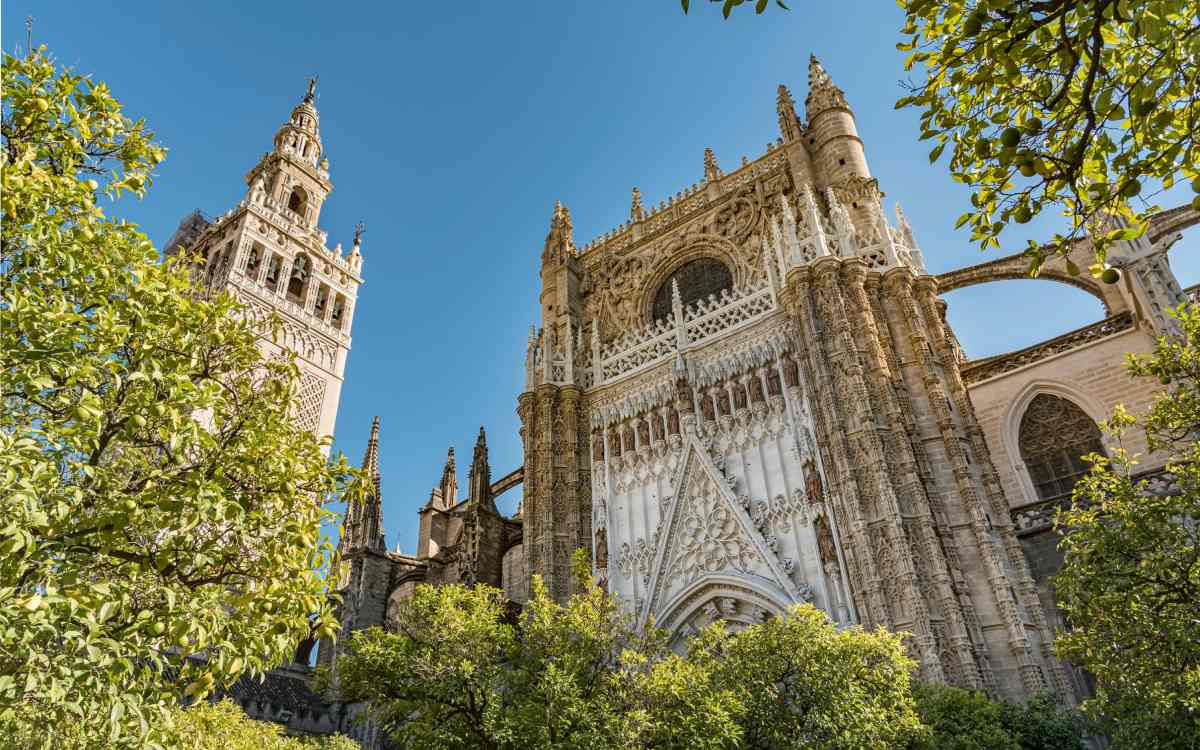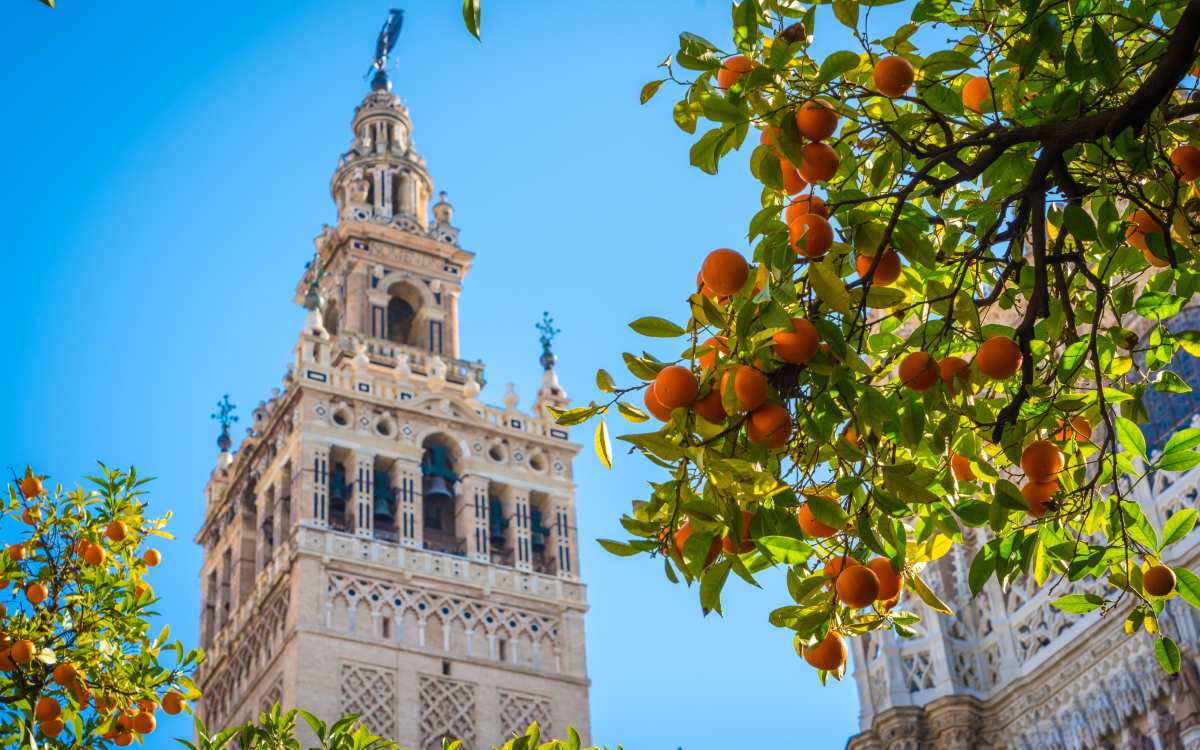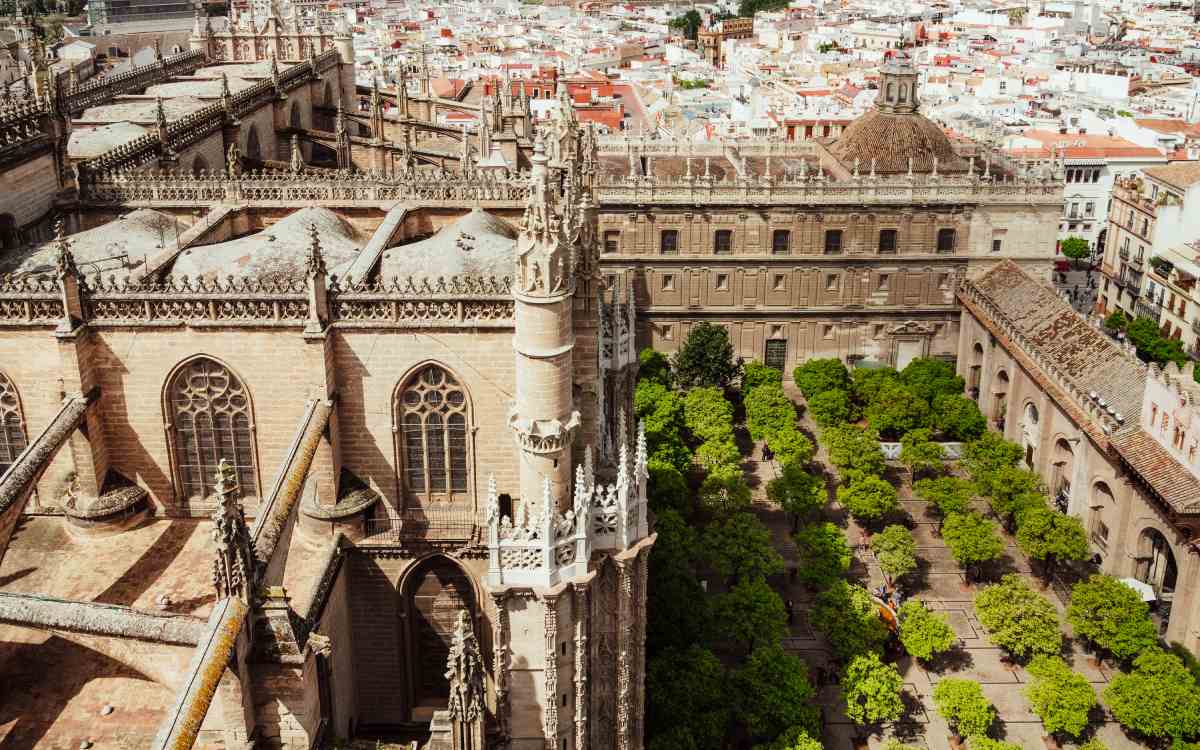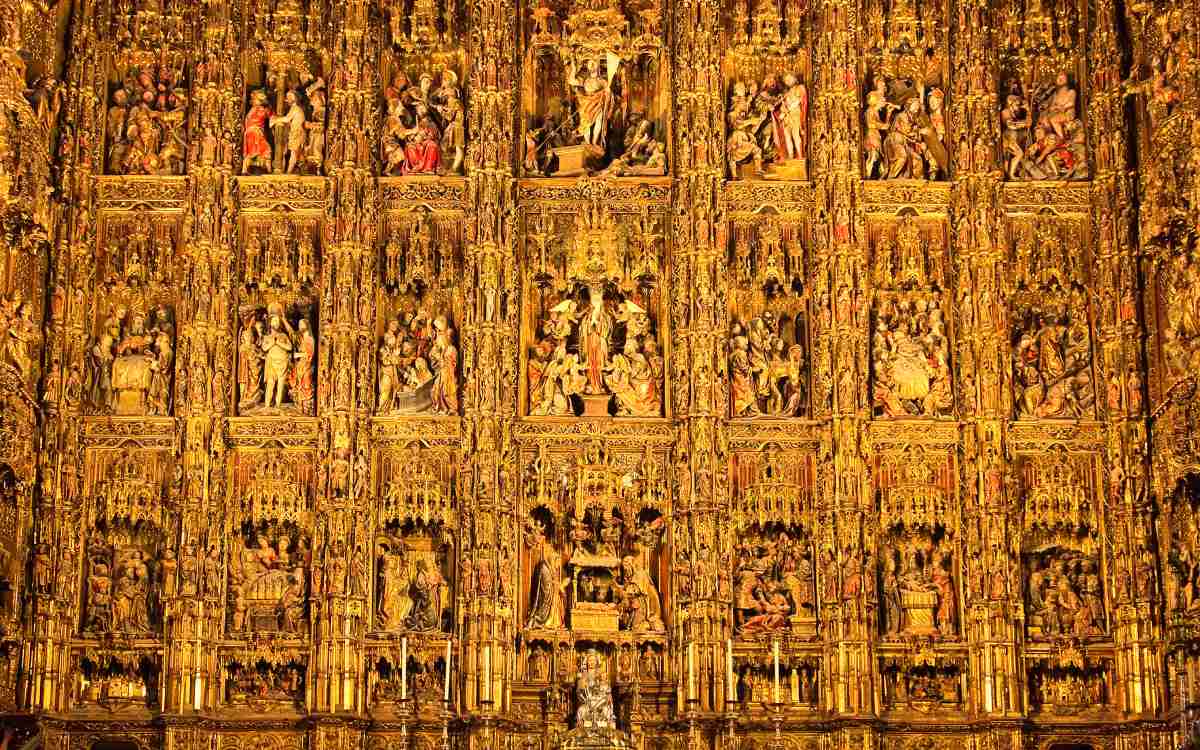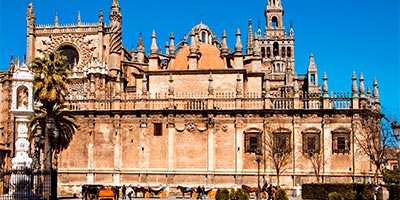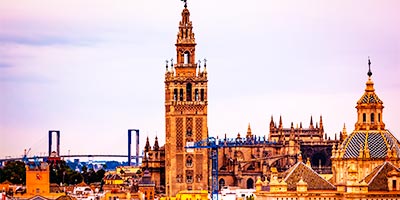The traditional Danza de los Seis is still performed in the presbytery; where a dozen children or choirboys dress up in 16th century pages to perform sacred dances before the Holy Sacrament.
In the trasaltar there are fifty Gothic, Renaissance and Mannerist sculptures from the 16th century. The choir, closed by a grille by F. Salamanca (1518-1523), contains the immense ashlar, with 117 seats and carved in ebony wood in 1511. Its main teacher was Nufro Sánchez. At its center there is a lectern for singers, an excellent work by Hernan Ruiz the Younger. Its Baroque retrochoir, built in marble and jasper, was sculpted between 1619 and 1635 by Miguel de Zumárraga, and is presided over by a 15th century panel of the Virgen de los Remedios.
The organs have superb 18th century cases and sculptures by Pedro Duque Cornejo, although the current instrument is by Aquilino Amezúa (1901).
The magnificent Sacristía Mayor (16th century) has a rich plateresque ornamentation. In the Capilla Real (16th century) are kept the mortal remains of King Alfonso X the Wise and his mother Beatriz de Suabia. The altarpiece includes the Gothic image of the Virgen de los Reyes, patron saint of the city. At her feet is the Baroque silver urn carved by Juan Laureano de Pina- with the remains of San Fernando. In addition, in the crypt are buried Pedro I of Castilla and his wife María de Padilla and you will find an exquisite Virgen de las Batallas, made of ivory in the 13th century.
The antechamber and the chapter house (from the end of the 16th century), with a vault decorated by Murillo, are work of Hernán Ruiz the Younger. It contains a good number of religious paintings from the 15th to the 19th century; including the famous painting by Goya of Saints Justa and Rufina, the sisters born in Hispalis who were martyred for not renouncing Christianity (3rd century) and who are the patron saints of Sevilla and of the potters’ guild.
Church of Sagrario (17th century) is actually a temple integrated into the cathedral and has a rich interior in which the main altarpiece by Francisco Dionisio de Ribas, with carvings by Pedro Roldán, stands out.
The four Capillas de los Alabastros (16th century) are located on the side walls of the choir. The most important one is that of the Immaculada; famous for keeping the wooden image sculpted in 1631 by Martínez Montañés; it is known as the Cieguecita because of its low gaze, with the eyelids barely open.
On the south side are the Capilla del Mariscal (‘Mariscal Chapel’), with an altarpiece by Pedro de Campaña (1555); and the Capilla de San Andrés (‘San Andrés Chapel’), where the very important Cristo de la Clemencia by Martínez Montañés (1603) is exhibited.
Among the western chapels is the altar of Nuestra Señora de la Cinta, whose sculpture was made by Lorenzo Mercadante (1470) and in the north the baptismal chapel of San Antonio, where the vision of San Antonio de Murillo is kept.
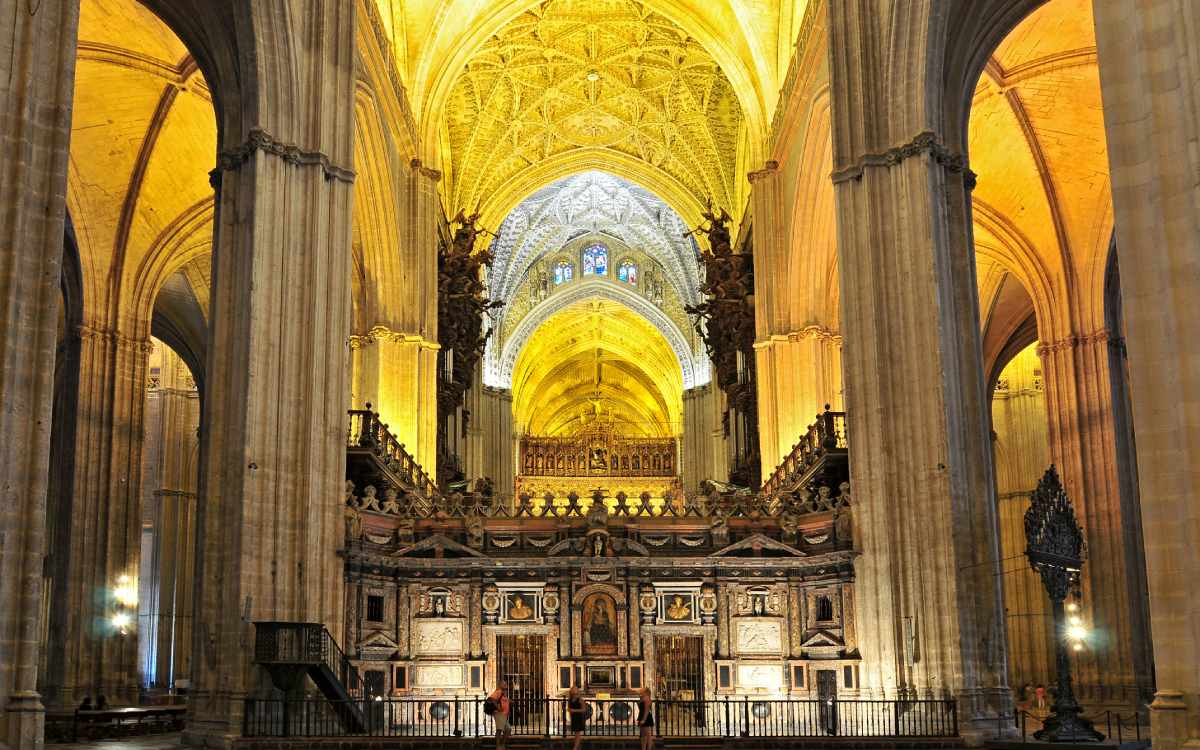
Nave and choir. | Shutterstock
Sevilla Cathedral has more than eighty stained glass windows from the 14th to the 20th century.
In the Casa de Cuentas, today known as the ‘Ornament Room’, the income and assets of the Chapter were controlled; it shows the Banner of San Fernando with which the king entered the city on the 23rd of November of 1248. Since 1255 that day a Procesión de la Espada (‘Procession of the Sword’) has been held; in which a relic of San Fernando, the mentioned banner and the Lobera sword are carried.
In the Cathedral Treasury stands out the Silver Custody made by Juan de Arfe (1587). It measures 3.25 metres high and contains 350 kilos of silver distributed in five bodies and it is crowned by a statue of La Fe (‘the Faith’).
Another of its most relevant gems is the set of 13th century Tablas Alfonsíes; given as a gift by King Alfonso X the Wise. On the other hand, Columbus‘ son, Hernando, gave to the Cathedral the Biblioteca Colombina, which includes Libro de las Profecías (literally, ‘Book of Prophecies’) written by Christopher Columbus himself in 1504. The Archive also holds the famous Imago Mundi by Pierre d’Ailly and Grammar of the Castilian Language by Antonio de Nebrija.
Among the funerary monuments of the cathedral is that of Columbus by Arturo Mélida (1891), who came from the Catedral de La Habana (‘Havana Cathedral’) and settled in 1902 in the southern arm of the transept.

